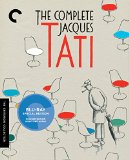| Reviews & Columns |
|
Reviews DVD TV on DVD Blu-ray 4K UHD International DVDs In Theaters Reviews by Studio Video Games Features Collector Series DVDs Easter Egg Database Interviews DVD Talk Radio Feature Articles Columns Anime Talk DVD Savant Horror DVDs The M.O.D. Squad Art House HD Talk Silent DVD
|
DVD Talk Forum |
|
|
| Resources |
|
DVD Price Search Customer Service #'s RCE Info Links |
|
Columns
|
|
|
Complete Jacques Tati, The
The French comedy legend as writer and director
Reviewer's Bias*
Loves: Criterion Collection, box sets, the M. Hulot character
Likes: Jacques Tati, smart physical comedy
Dislikes: Most silent films
Hates: Blind devotion to legends
The Set
After giving a quick look at French actor/writer/director Jacques Tati's early films, those new to his work could easily think he should be slotted alongside classic silent-comedy stars like Harold Lloyd, Buster Keaton and Charlie Chaplin, as his abilities as a mime and with physical comedy, as well as the bemused quality of his characters fit that mold very well. However, Tati worked in a world of "talkies", even if you barely needed to understand a word spoken to really enjoy his movies, which frequently used society's obsession on progress, innovation and technology as a target for his comedy and commentary. His characters are old-school and struggle with change, but the movies aren't laughing at them. They serve to show the problems found in forgetting the past.
One of the things that set Tati apart from the earlier greats was his ability as a filmmaker. Not to take anything away from pioneers like Lloyd and Keaton, who were masters at pulling off a gag for the camera, but Tati's artistry was on another level, as he crafted beautiful imagery to go along with his comedy, culminating in his masterwork, the stunning PlayTime, which brought together all the skill he showed in his brief, but impressive filmmaking career, in one mammoth, misunderstood spectacle that downplayed his most popular creation and offered a beautiful meditation on modern life.
For this collection, Criterion gathered together the Tati films they've released over the years--Mon Oncle, M. Hulot's Holiday, PlayTime and Trafic--and filled in the gaps with the first feature he directed, Jour de Fete, the last film he made, Parade and a disc of Tati-related shorts, to create a rather complete overview of the man's career, adding in a smorgasbord of extras to raise it past complete to ultimate (though some missing extras might make you hold onto your previous versions.)
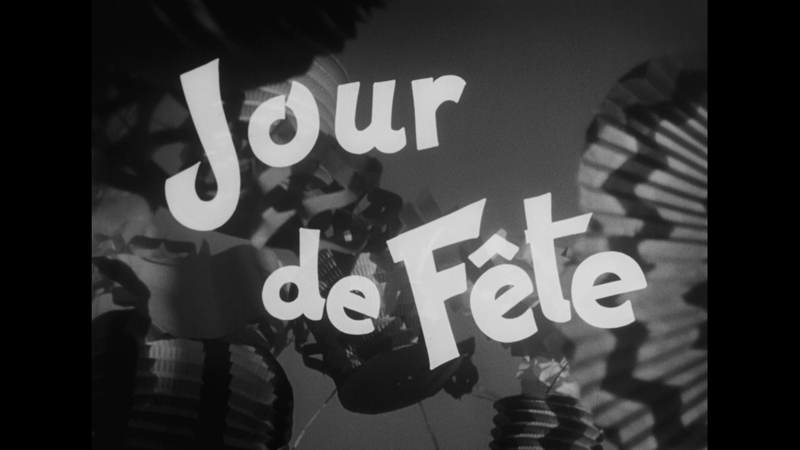
Jour de Fete
One of the few Tati films I hadn't seen before, Jour de Fete is an adventure of Francois the mailman, an occupation Tati explored in earlier shorts. A connection point between people in a small village, the mailman interacts with all in the course of his duties, allowing him to serve as an unwitting guide to the town. He also sets an agenda for Tati, as he becomes obsessed with improving the speed with which he delivers the mail, in order to keep up with the technologically-advanced Americans he sees in a newsreel. Naturally, such an effort, by a simple man on a bike, is doomed for failure--a funny failure.A lot of the gags in this film, like the runaway bike and him losing his bike to a railroad-crossing gate, are directly out of his earlier short about mailmen (also available in this set) but they remain enjoyable, as does Francois' struggles with a couple of carnies in town for the big celebration, who wind up taking advantage of his good nature. Because Francois's enthusiasm is inexhaustible, he never gets down, so one can never feel bad for him, a definite plus in a movie that throws an obstacle course in front of its hero.
Like the films that would follow, Jour de Fete is a series of moments rather than a plot-driven story, so it just sort of rolls along until it ends, rather than taking you anywhere. At times, this results in a disjointed pace as the film tries to find somewhere to go until the next hazard falls onto the mailman's path, but thankfully those moments are short and infrequent, as the gags are brief and plentiful, so if a bit doesn't quite land (which early in Tati's career, was a reality) another one would be along shortly to cleanse the palette. This is especially true at the end, when Francois embraces the challenge of delivering the mail like an American, setting off a number of bits as he tools around town in search of delivery efficiencies, the film's definite highlight.
Monsieur Hulot's Holiday
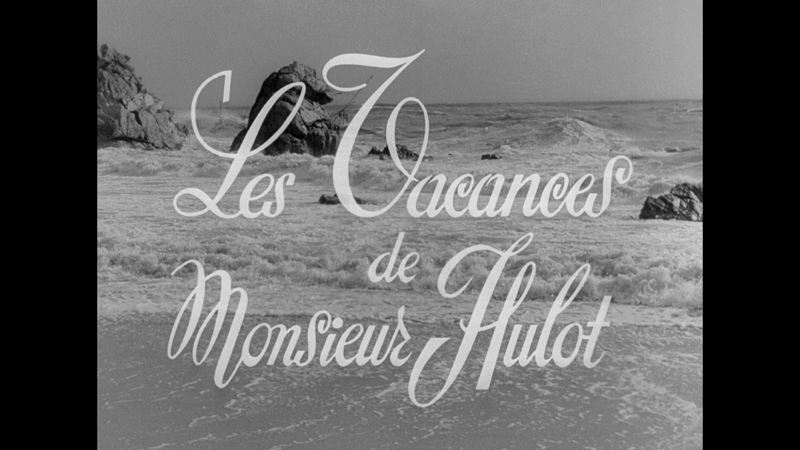
The quasi silent-film adventures of M. Hulot (played with divine aloofness and master timing by Tati himself) always served to observe the most universal of behaviors in specific environments, be they vacation spots or soulless architecture. M. Hulot, by virtue of his somewhat aimless travels, finds himself in any number of off-kilter situations, but manages to keep a positive, mostly detached demeanor throughout. We never learn much about him, but we don't really need to, as he's just our guide into these worlds, and when the credits roll, he'll still be the same guy we met when the film started, right down to his hat, jacket and pipe.
Like Jour de Fete, M. Hulot's Holiday is really a series of occurrences, as Hulot wanders around a beachside town getting into various situations, or observing them. As with Tari's earlier character of Francois, Hulot doesn't control much of what happens, instead reacting in his own confused/amused way. It's an odd choice to make your hero a reactionary character rather than a proactive one, but in doing so, Tati makes the film more about the world that Hulot is reacting to, watching and interacting with; creating a bigger, more universal movie than just one man's story.
The gags aren't quite as polished at this point, in Hulot's first appearance, as they are in the brilliant Mon Oncle, but they still have plenty of charm, right from the start and the gusts of wind Hulot brings with him to the hotel. There are tons of sight gags and set-ups, far more than in his previous feature, and though there's an undeniable cleverness to the vast majority, most aren't best defined as funny, but rather amusing.
What's especially different here, as opposed to his next film, but in line with PlayTime, is how much focus is placed on the activities of others in and around the town. Though this holiday is Hulot's, we get almost as much from the others around. This film also is the start of Tati's mastery of sound (an element already felt in a smaller way in Jour de Fete.) The use of sound here is so exacting and present that it, by itself, changes the way scenes might otherwise be perceived.
It's worth noting that the version included here is not the original 1953 cut, but the Tati re-edited 1978 version of the film which changed the sound mix and removed 12 minutes of the film. Though if you're curious about the original, check "The Extras."
Mon Oncle
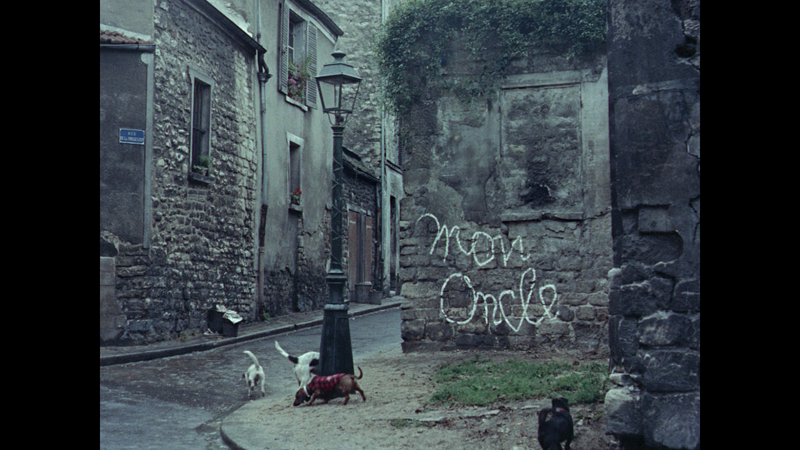
Tati's first true color film (after the failed experiment of Jour de Fete), Mon Oncle had to be shot in color. There would be no proper way of telling the story of the simple Hulot's intrusion into the modern lives of his sister and her husband without the future-forward color in this movie. After watching Hulot do battle with animal-skin rugs and other old-world opponents, to see him face the future the way he does here, in coping with the technology-driven world of his relatives, is like seeing an evolution in movie comedy. The two opposite forces, with one side living in a sterile, manufactured environment and the other in an organic, ramshackle apartment, clash often over the course of the movie, creating comedy gold.
Hulot's sister and her family are immersed in technology, from a remote-controlled stove to the sensor-controlled garage, and are locked behind a gate that separates them from the old town (a point made clear by an early scene involving the family dog, who runs with a pack in the streets, but leaves them outside when he returns home.) They are also immensely focused on appearance (an obnoxious fish fountain that is only activated for guests being the most obvious indicator) and when you combine those two things and put them in Hulot's path, you know it's going to lead to trouble--of the best kind--as modernity and class are two of the silent wanderer's key foes. Take these issues and multiply them by the expectations of the workplace, which happens when Hulot's brother-in-law gets him a job at his factory, and thing just get exponentially more out of hand, allowing for a huge number of Tati's trademark smile-inducing gags.
As is always the case with a Tati film, the comedy is balanced by sentimentality, and, as is often the case in these films, that sense is represented in the innocence and wonder of children, in this case Hulot's nephew--a kindred spirit to himself. In their precision, Tati's film's can verge on artificiality, and when you add in touching elements like the less-comedic moments with the nephew and a young lady who strikes up a friendship with Hulot, there's risk of going over the top and creating something sickly sweet. The thing that keeps it all together, however, is Tati as Hulot. As even-keeled as a person could be, he shows no real emotion, serving simply as a tour guide, or a lens through which to see this world. His simplicity as a character grounds what would otherwise add up to something fantastical.
PlayTime
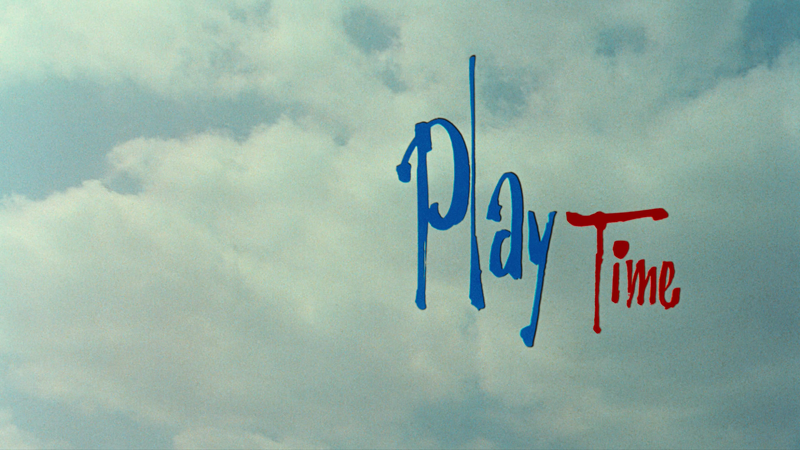
Coming in the wake of his two most beloved comedies, the films that introduced the world to M. Hulot, Tati could be forgiven for reaching for the stars with his next film. And though it is, in many ways, a plot-less collection of awkward experiences, like the previous movies he made, PlayTime sees the writer/director build a world of his own, a sleek city of the future that he sets his characters loose in, as they search for some place of their own amid a deluge of cold, technological progress (obviously familiar ground for the creator.)
However, Tati did something interesting in PlayTime, pulling back on Hulot (who is looking for a job and having a hard time tracking down his interviewer) and spreading the focus around (like he did in M. Hulot's Holiday), with a group of American tourists also out and about, looking for an authentic Parisian experience in an artificial, modern city that could exist almost anywhere on Earth (a point shown in a set of matching international travel posters in the background of one scene.) Though their paths will cross frequently, this is not a movie about bringing them together. They just exist together apart.
PlayTime, more than anything else, feels like an experiment in filmmaking, as Tati tries out some new things, particularly the use of 70mm film to give himself a canvas on which he can look at this ultra-modern Paris and its denizens from a distancing length. The result is a film that unfolds on a number of levels at once, and frames that are loaded with gorgeous imagery that's aided by the use of hard edges, glass and steel. A scene where Hulot deals with some confusing reflections and an abundance of artificial enclosures is classic Tati, and the sense of sentimentality that's delivered by a single reflection of the Eiffel Tower is as powerful as any traditional moment of film could have been.
Though the film cuts down on the Hulot Time, when he is present, it's as good as ever, as the world of PlayTime is as adversarial to him as any he's faced before, if not more so, as nothing has ever been so impersonal to him on such a scale. The set pieces are as impressive as anything Tati has offered before or after, from the visually-fascinating cubicle farm to the mostly-pointless modern inventions displayed in a showroom. One scene, in which the people in two rooms with glass walls interact with each other until the truth of their relationship is revealed, may be the single most clever bit Tati ever put on-screen (and likely the largest.) This film may have been incredibly expensive to make, but every franc ends up in front of your eyes.
Trafic
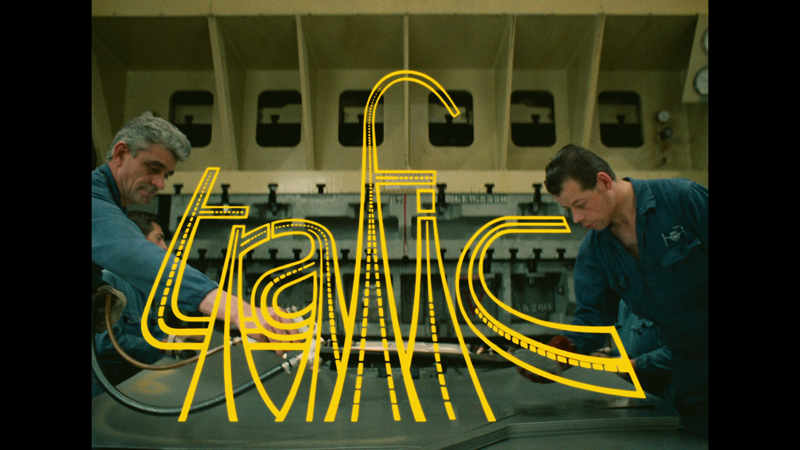
It's never easy to let go of a beloved character, but sometimes, there's just nowhere left to go with the concept. Given time though, a fresh approach and an open mind can bring a character back to new life, like we've seen with Christopher Nolan's Batman films or Francis Ford Coppola's take on Dracula. Perhaps it's time to do the same for M. Hulot, Jacques Tati's amiable wanderer, who last led us through humanity's foibles, umbrella in hand, pipe in mouth, in 1971's Trafic.
Here, M. Hulot is a a car designer for Altra, a car manufacturer looking to launch a new vehicle at the International Autoshow. Unfortunately, and predictably, considering Hulot is involved, the car is extremely delayed, and doesn't actually work. So in order to get it from France to Amsterdam for the show, they have to load the new car on the back of a beat-up truck and drive it there, with no time to spare. So Hulot, the driver and Maria, the company's high-strung public relations woman, hit the road, and hit many obstacles along the way, including break-downs and a border incident. By putting this trio on the road, the film can then put the camera on drivers and the odd behaviors that come with cars. It's an appropriate B-side to Playtime and following the bombast of that film, it's a return to the intimacy of his earlier films and an excellent bookend with M. Hulot's Holiday for the Hulot universe.
It's not unusual for a Hulot film, but there's not much of a story here, as the trip is really just the conceit used to string together an unending parade of gags, set pieces and montages that range from smile-inducing to very funny. The biggest of these scenes is a major chain-reaction accident that spreads out from Hulot's truck, but it's rather artificial in how it plays out, robbing it of some of its comedic effect. That it's followed by an odd bit with the victims stretching and wandering, as Hulot runs around checking on everyone, doesn't help, as there's a lack of motivation from all involved. The same goes for a scene at customs where Hulot and the driver show officials how all of the new car's features work. It's the only time we really see what's so interesting about the car, but it's done one after another after another, so it's got the naturalness of a shopping list (plus, the fact that the truck driver seems to know every detail of this new car makes little sense as well.) The smaller, less obvious gags tend to work better, like the astronaut-inspired repair moment, even if they don't result in big laughs. They just feel more real, which is truly Tati's strength.
Also working against the film is the character of Maria, who is beyond over the top as the PR agent, thanks in large part to a weak performance by Maria Kimberly, who acts with the subtlety of a hammer to the face as her character learns to unwind, thanks to Hulot's influence. Yes, Hulot films are marked by exaggerated physicality, but the scene where she reacts to finding her dog under her car features one of the worst performances I've ever seen. It's practically parody, especially when played opposite a master like Tati. Fortunately, she's not a key part of the film, and can be somewhat ignored in favor of the more inventive moments and the generally well-shot visuals, which really are impressive for a comedy. The final shot of the film alone is frame-worthy, and puts an odd cap on the film, even while it illustrates the whole point of the movie.
Parade
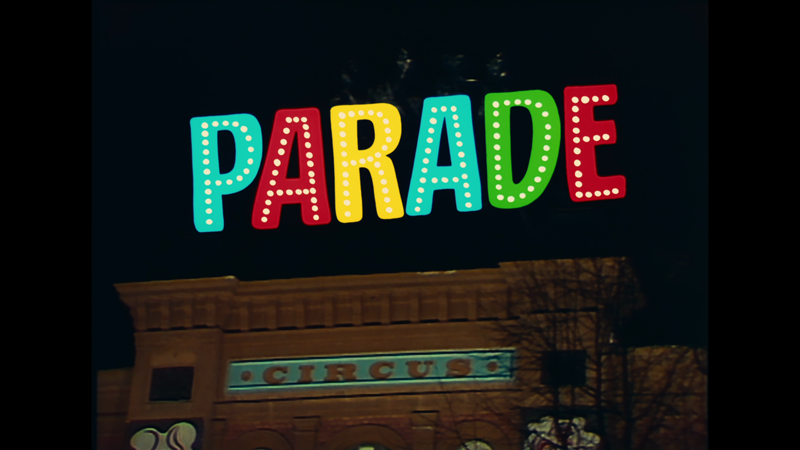
For his last film, the 1974 Swedish TV movie Parade, Tati created a film unlike anything he'd done before, but, all the same, undeniably Tati-esque. A made-for-television circus, the film is a variety show as movie, with the performers on-stage, including a frequently present Tati, and the audience, filled with obvious, but entertaining plants amongst possibly real viewers, all getting in on the fun. The result, as was the case with the majority of Tati's work, is a pure sense of whimsy that is rarely seen today. The closest we have to the fun seen in this film today is likely the performances of Cirque du Soleil; certainly a spiritual descendant of Tati's clowning side.
Though there's plenty to enjoy in the 89 minutes of almost non-stop silliness, including excellent examples of traditional circus/variety acts like jugglers, magicians, unique musical acts and gymnasts, as well as strange bits like a seemingly dangerous extended donkey-wrestling segment, the highlight of the show, especially in the context of the set, is Tati's brilliant mime work. Whether he's pretending to fish, play soccer or tennis (particularly in slow motion) or box, his movements are perfection, selling every reaction with the help of his usual great sound effects. It takes real talent to command a stage all by himself the way he does here, and though some of it calls on old favorites, like his horse-riding routine, he earns the reactions he gets here.
After watching Tati build to his artistic pinnacle in PlayTime, to see him end on Parade is a bit anti-climactic, as, most of the time, it's a very straightforward multi-camera live television production, punctuated by a few interesting cutaways to the crowd and a few well-shot studio scenes. However, within another mostly plotless, character-driven film, you can spot elements of Tati's signature style in the use of shadows, the juggling of multiple story elements and the aforementioned sound effects, amongst other recognizable factors. Parade may not be the best of Tati, but it is a distilled version of what made him so special, like a less repetitive best-of.
Tati Shorts
I was torn as to whether to include these as extras or as part of the set, but since A) it's called the "complete Jacques Tati" and B) it has its own supplements, it makes sense to review it in the set proper. This seventh disc holds seven short films from between 1934 and 1978, featuring Tati. Up first in the set is the 25:01 On Demand Une Brute (1934), featuring Tati as a man who mistakenly finds himself in a pro wrestling match, which doesn't quite fit his physique. The physical action establishes quickly what Tati would become known for. It's a theme that would repeat itself in the 13:23 Soigne Ton Gauche (1936), which was originally included on the Criterion DVD of M. Hulot's Holiday. This time, Tati plays a daydreaming farm boy who gets drawn into a boxing mismatch. The appearance of a postman would lead into Tati carrying the sack in the 16:05 L'Ecole de Facteurs (1946), where mailmen are trained to improve their delivery efficiency to hilarious results. (This short was found on the Criterion DVD of Mon Oncle.)1935's Gai Dimanche (21:30), which was co-written by Tati (with Enrico Sprocini), sees Tati as part of a team of scheming tramps who lead a fake tour group. It's a mix of what Tati would become known for, with some highlight moments, like the fun sleight of hand and the silly chicken chasing. It pales in comparison though to the 25:36 Cours du Soir (1967), which may be Tati's finest work, minute for minute, as he teaches a classroom comedy theory in a surreal manner that would fit in perfectly with Steven Soderbergh's Schizopolis. The amazing thing about this film, which was produced during the filming of and on the sets of PlayTime, is how it manages to entertain as much as it informs about how comedy works.
The final two shorts are really more about Tati's daughter Sophie Tatischeff than about Tati himself. 1977's award-winning Dégustation Maison (13:58), the story of a bustling group of regulars at a cafe/bakery, was directed by tatischeff and has a unique and interesting energy, but it is no way a Tati film. Forza Bastia (1978) is also unrecognizable as a Tati film, but this time he was behind the camera, shooting footage around a big soccer match between a French team and a squad from the Netherlands. Though Tati shot the film, which shows how the fans of Bastia riled themselves up for the match and the rainy gameday, he never finished the movie, a job which fell to his daughter. The world of soccer fanaticism is always an intriguing one, but 27:37 of nearly wordless footage may be a bit too much.
The Discs
The Complete Jacques Tati is a set of seven Blu-rays, with each disc packaged in a matte cardboard digipak folder that continues the set's colorful cartoon design. The seven folders, along with the set's booklet, are held in a thick, sturdy slipcase that matches the folder's style. The menus, which maintain Criterion's excellent minimalist style, use simple, brightly-colored art that's an inverse of the folder art, offer the usual options.
Here's a breakdown of your audio and subtitle options:
Jour de Fete: English subtitles
Monsieur Hulot's Holiday: French LPCM 1.0, English Dolby Digital 1.0 and English subtitles
Mon Oncle: English subtitles
PlayTime: French DTS-HD Master Audio 3.0, International DTS-HD Master Audio 2.0 and English subtitles
Traffic:English subtitles
Parade: English subtitles
Tati Shorts: English subtitles
The Quality
Across the board, the 1080p, AVC-encoded transfers are impressive, looking quite improved over previous releases, both DVD (obviously) and Blu-ray. For instance, PlayTime, taken from a new 4K transfer, offers a much clearer image than the previous release, not to mention a significantly different tone, with a greenish tint to the proceedings. Here, Criterion's history buys it the benefit of the doubt, as the change from the far more white-balanced previous release could be seen by some as an error. However, the overall improvement indicates that this is the way it was meant to be seen (not to mention that this somewhat sickly pallor fits Tati's view of the modern world better.) Though Parade looks a lot like the video it was largely shot on (not much can be done about that), the filmed scenes are sharp and well saturated and are full of fine details. The same can be said for the black and white films, with Jour de Fete looking terrifically sharp, however maintaining correct contrast and black-levels, with a clean-up allowing it to look fresher than ever. The same can be said of M. Hulot's Holiday, which is better described a gray film than a black-and-white film, as the movie paints with gray to wonderful effect. Mon Oncle is the most impressive film in the set in terms of color, but that was always likely the case due to its content. Even so, the transfer is beautiful with vivid, well-saturated color and plenty of fine detail (look at Hulot's house for a prime example of the quality.) The shorts all look terrific (where the source material allows them to) with Soigne Ton Gauche coming off as markedly improved from the DVD release (as the frequent shakiness in the image is now gone) and Cours du Soir looking almost as good as its contemporary, PlayTime, which itself is a thing of beauty (which makes Trafic, a somewhat softer film, look less impressive in comparison, though it sports a quality transfer that boasts fine detail [particularly during the big car show scenes.]) Dégustation Maison and Forza Bastia are less polished, due to their sources, but fine presentations nonetheless. Overall, thanks to several great restoration efforts, there are no real concerns about dirt or damage (the package isn't perfect, but there's nothing egregious) and digital distractions are not noticeable. (It's worth noting that any alternate versions in the supplements don't receive quite the pristine presentation the main features do, even if they do look very nice.)
The majority of the films in this set, features or otherwise, include an uncompressed LPCM French 1.0 track, with the exception of PlayTime, which, along with a a 2.0 international version, includes a DTS-HD Master Audio 3.0 track, where Tati's interest in sound, aided by the artistic risks taken in the film, really gets a chance to shine. The LPCM tracks are strong and crisp (where appropriate [so, not in the dialogue]) and offer a fine mix of the music and sound effects that are trademarks of Tati's films. If you really want to appreciate the value of an uncompressed track, compare the LPCM on M Hulot's Holiday with the Dolby 1.0 also offered. The difference in the depth and weight of the sound is astounding.
The Extras
Jour de Fete
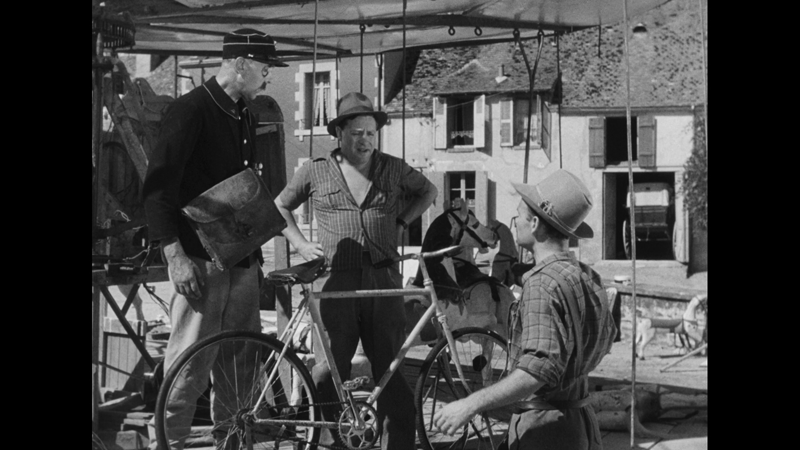
A new addition to the Collection, this film gets the royal treatment, with an impressive and unique spread of extras that includes two additional versions of the film: the 1964 cut and the 1995 cut. The 1964, which, like most Tati re-edits, check in as shorter than the original, is a unique cut, as it utilizes new footage to introduce a new character of an artist who introduces some color into the village, literally, as Tati had select elements hand-colored. It's a unique addition, and is striking when it's present, but it's not frequent enough to really create a huge difference from the original. With the 1995 version, the technology was finally available to create a print from the original color negatives shot alongside the black-and-white version. The film starts with a narrator explaining the unusual history of the color version, which looks rather odd thanks of the film stock used. The effect is like watching a color film that's been bleached, resulting in a strange 3D-without-the-glasses effect. Unsurprisingly for Tati, this version, which was overseen by his daughter Sophie, is shorter than the original by seven minutes, but the differences aren't tremendously noticeable.
"Jour de Fete: In Search of the Lost Color" is the name given to a 1988 episode of the French TV series Cinema Cinemas (30:05). In addition to interviews with Tati's daughter Sophie, producer Fred Orain and DP Jacques Mercanton, the real treat is the technical investigation of the color version of the film, including the experimental technique used to create it and the attempt to solve the mystery as to why there was never a print, which is a really great story.
Tati scholar Stephane Goudet is all over this collection, but the biggest entry in his run of essays is L'Americaine, a feature-length analysis (1:21:07) of the first Tati film. Goudet breaks down the film academically in a way that borders on psychotic in the level of detail and the depth of focus, as he compares the movie to the rest of Tati's work through a variety of clips. he also touches on Tati's final, unproduced script and the influence of the silent film great on Tati, cataloguing the ideas we borrowed from the masters.
Also available is the film's engaging trailer (2:35), which sells Jour de Fete as an alternative to grim and gritty movies.
Monsieur Hulot's Holiday
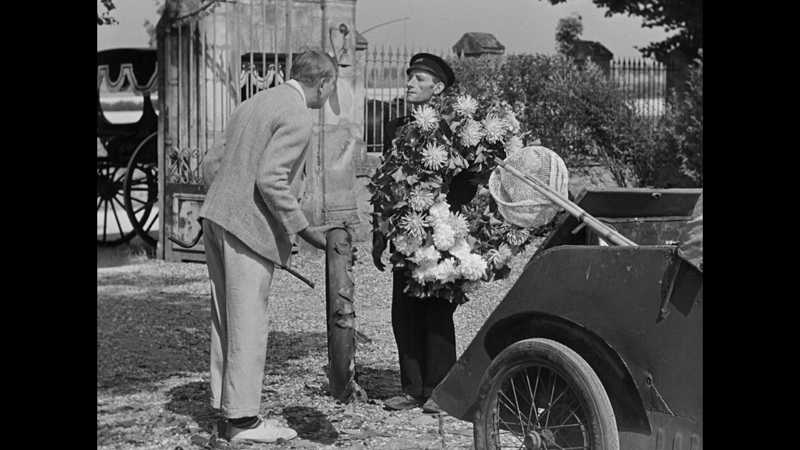
After the original 2001 DVD introduction to the film by Terry Jones (3:29), in which he shares his adoration of Tati's work, particularly the beauty created in M. Hulot's Holiday, and the differences between this movie and the other Tati films, we get the original 1953 edition of the movie, allowing for comparing and contrasting with the new version. As someone who defends directors' rights to change their own work (with the exception of George Lucas), it's easy to side with Tati and his most recent edit, but it is a tighter film all around with that time removed. It is nice however to get to explore the edits Tati made.
Another Goudet essay arrives in the form of Clear Skies, Light Breeze (40:24), which offers a host of points on the film, exploring the film's ideas and how it fits in with the other movies on Tati's resume. These early Goudet essays are more academic than his later work, but the structure does keep everything clearly understandable.
"Sounds of Silence", a new interview with composer and critic Michel Chion (31:52), focuses on Tati's use of sound, which makes this a key entry in the analysis of the director's work. Using a variety of examples from across Tati's canon, Chion explains the importance of the sound in his movies, the thoughts behind the use and how they enhance the film. As one of the most obvious and impressive elements of the Tati style, sound gets a proper exploration in this discussion.
The final extra on this disc is a 1978 episode of the French series Cine Regards (26:37), which sees Tati watching clips of his work on an editing table and then discussing them. The effect is something like a delayed commentary, though perhaps someone could have just laid the audio over the scene and saved a little time. Either way, Tati is very funny as he shares his memories and looks back at the first appearance of M. Hulot.
Mon Oncle
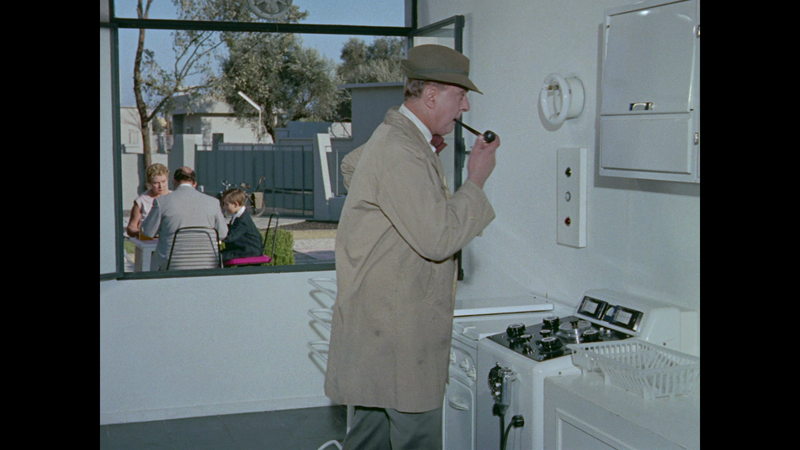
Terry Jones' DVD intro from 2001 (5:10) kicks things off (why didn't we get more of the supposed "Janus Films Director Introduction Series" anyway?) Jones compares the film to the previous Tati efforts, talking about his initial response to the movie, the themes in the film and the highlights of Tati's direction, particularly the sound design.
For English-speaking audiences, Tati re-did his film, changing languages in both much of the dialogue and the physical signage, while, as was his wont, re-editing it to cut things down by 10 minutes. Efficient comedy is usually better comedy, and that's the case here, as nothing is lost in Tati's expert trimming. You may want to be able to say that you prefer the original French, but this version is just as entertaining.
From 2008, we get Once Upon a TIme…Mon Oncle (51:37), a documentary on the making of the film, part of the series "A Film and Its Era" from Marie Genin and Serge July. Among those interviewed for the documentary are Pierre Etaix, architect Jean Nouvel, designer Philippe Starck and even David Lynch, as well as several others from the world of film and theater. The great thing about this piece is that it not only looks at how the movie came together, but also places it into the context of the culture and politics of the time, helping engender a better understanding of the film. It also includes clips from several great archival interviews with Tati.
A three-part 2005 featurette, "Everything is Beautiful" (52:46), focuses on the design in Mon Oncle, an artistic leap for Tati. A stylish exploration in its own right, the series lets experts in the field, including furniture makers who reproduced the modernist pieces in the movie, talk at length about the set, costumes and furniture, with models of the locations serving as a centerpiece. Anytime you can bridge the gap between cinema and the real world, as these pieces do so well, you've got an interesting bit of infotainment.
You'll be absolutely shocked to learn that Goudet has crafted a visual essay around Mon Oncle. 2013's Everything is Connected (51:37) looks at Hulot at his peak, hurtling head-on into the face of advancing technology, and comparing the film to the other Hulot adventures. As with everything else Goudet does in this set, this is a wonderfully in-depth review of what makes Tati such a legend and Mon Oncle such a treasure.
The disc wraps with an 8:32 clip from a 1977 episode of the French TV series 30 millions d'amis, which sees Tati introduce his own dog, and talks about les chiens in the film. Combine Tati and his ever-present sense of humor and his adorable, urinating dog and it makes for a featurette that's hard to resist.
PlayTime
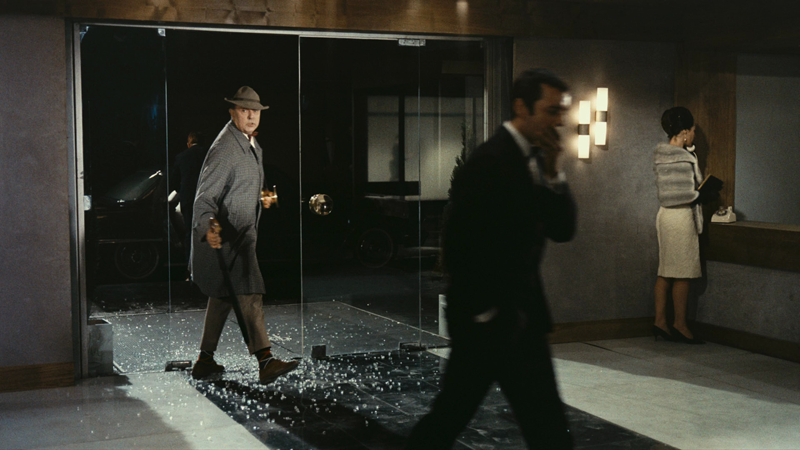
The same introduction Terry Jones recorded in 2001 for the Criterion DVD (6:17) returns here, as Jones uses his own personal connections to the movie as a jumping-off point to discuss the film's 70mm format, the role of M. Hulot in PlayTime and the film's themes. This is followed by three groups of selected-scene commentaries by critic Philip Kemp, Goudet and theater director Jerome Deschamps. Recorded in 2004, Kemp comments over seven scenes for 46:44 (in English), while Goudet covers two scenes (13:04) and Deschamps tackles four(13:14), in a pair of French recordings from 2013. While Kemp obviously has the most time to talk, and therefore covers the most areas, the level of detail in the observations of Goudet and Deschamps are valuable in their own right.
"Tativille" (26:10) is a black-and-white 1967 episode of Tempo International, a British series, during which filmmaker Mike Hodges interviews Tati on the set of PlayTime. In addition to some great on-set footage, a wonderfully candid chat with the director sees him deliver a great run of insight on the art, walking around in moody black and white, like a back-alley stand-up talking about movies in French. A great supplement to check out.
Goudet returns with another look at Tati in 2002's Beyond "PlayTime" (6:30), which focuses on this film, especially the expensive and complex production effort, and features some scarcely-seen archival footage from the set. Seeing the insane work it took to create this movie makes you appreciate the end results even more. Then there's even more Goudet, as he zooms in on Tati's style as a director on the film in Like Home (18:55).
"Script girl" is a 12:10 interview from 2006 with Sylvette Baudrot, a script supervisor on three of Tati's films, where she discussed what it was like working with him. It's followed by "Jacques Tati at the San Francisco Film Festival" hails from 1972, when the director made an appearance in support of the film's U.S. premiere. This piece offers up 16:44 of audio recordings from the !&A session, which was moderated by festival director Albert Johnson. Though a bit halting talking in English, Tati is very funny answering questions from an audience seeing the movie for the first time.
Trafic
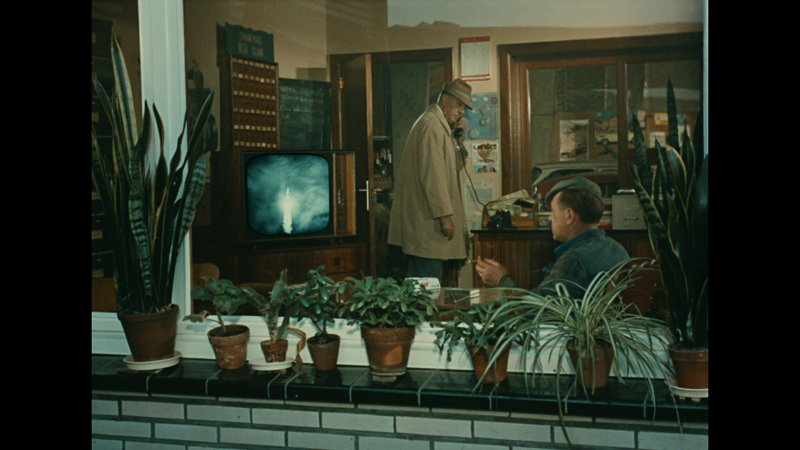
Missing from the Criterion DVD of Trafic in this set are a 1973 episode of Morceaux de bravoure, which sees Tati interviewed by Andre Halimi, and seven minutes from a 1971 episode of Le journal du cinema, with the cast of Trafic talking about their experiences in making the film and working with Tati.
Parade
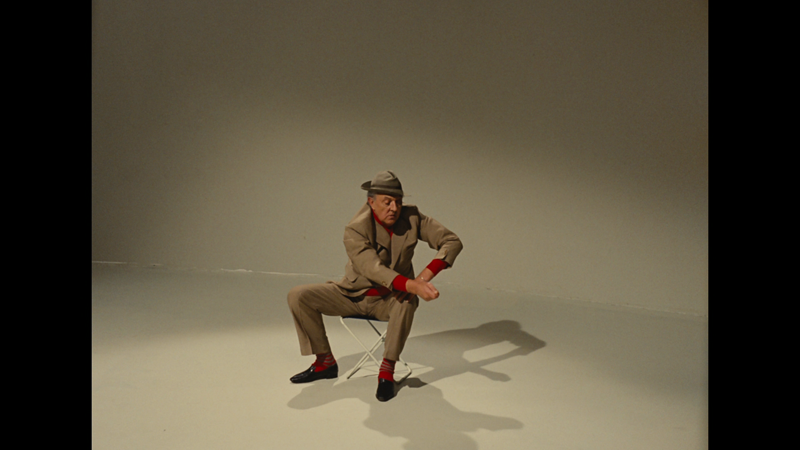
In terms of pure numbers, this disc is the third lightest in the extras, but in terms of quality it's right up there with the rest, starting with a 1982 episode of the French TV series Magazine, which features a tribute to Tati from set designer Jacques Lagrange. The 15-minute clip is a very tradition interview, with Lagrange sharing memories about working with Tati. There's also In the Ring (28:06) another thoughtful, well-researched visual essay from Goudet, this one from 2013, which takes a look at the circus themes and their connection to Tati, as well as some thoughts on the acts that perform in the movie. Perhaps this set could be subtitled The Complete Stephane Goudet.
Wrapping this disc up is the two-part 1989 documentary In the Footsteps of M. Hulot, from Tati's daughter Sophie. Compiling two hours of footage of Tati from interviews and appearances, with on-set photos and some behind-the-scene film, the two-part feature combines a biography of Tati with the story of M. Hulot, to give you a rather complete view of Tati and his work, mostly directly from his own mouth. The pace of the film, which was previously available on the Criterion DVD of Trafic is purposefully languid, like Hulot himself, and allows a nostalgic, emotional feel to develop. It's an excellent introduction to the man and his creation, but holds plenty of value for his fans as well.
Tati Shorts
The extras start with the 31:27 "Professor Goudet's Lessons," a 2013 adaptation of a 2009 "lecture" by Goudet, which had been presented as a multi-screen display for a Tati museum exhibit. Though delivered with a definite sense of humor and style, it's a legitimate academic review of the comedic themes and elements of Tati's work, mixing entertainment and information well, using clips from the films and testimony from filmmaking fans, including Wes Anderson, David Lynch and Michel Gondry, to illustrate Goudet's points. It also throws in a bit of the obscure, including commercial breaks with weird weight loss ads actually directed by Tati himself.The other extras on this disc is 2002's Tati Story (20:38), yet another offering from Goudet, which previously was available on the Criterion DVD of Playtime. A more straightforward biography, it traces Tati's life and tells his story through an assortment of photos and videos, though it probably made more sense as an inclusion on the first disc as as introduction to the man.
As is usually the case, Criterion has produced an attractive and extensive booklet for this set, but for some reason, the set we received was missing it. More info to come once we receive a copy.
The Bottom Line
If you're a Tati fan already, having the wealth of content here, covering the breadth of his career in tremendous depth, is like a gift from cinema heaven. If you're a newcomer to his work, it's pretty great to get his canon in one fell swoop, while the extras serve as a masterclass in Tati. Everything looks and sounds great, and there are more extras here than one could have ever imagined even existing. After watching them, one should be eligible for a degree in Tati. If you enjoy a bit of thoughtful silliness in life, or are in desperate need of some, do yourself a favor and soak in Tati's creations and the set's ruminations on filmmaking and comedy.
Francis Rizzo III is a native Long Islander, where he works in academia. In his spare time, he enjoys watching hockey, writing and spending time with his wife, daughter and puppy.Follow him on Twitter
*The Reviewer's Bias section is an attempt to help readers use the review to its best effect. By knowing where the reviewer's biases lie on the film's subject matter, one can read the review with the right mindset.
|
| Popular Reviews |
| Sponsored Links |
|
|
| Sponsored Links |
|
|
| Release List | Reviews | Shop | Newsletter | Forum | DVD Giveaways | Blu-Ray | Advertise |
|
Copyright 2024 DVDTalk.com All Rights Reserved. Legal Info, Privacy Policy, Terms of Use,
Manage Preferences,
Your Privacy Choices | |||||||









